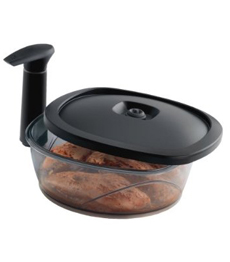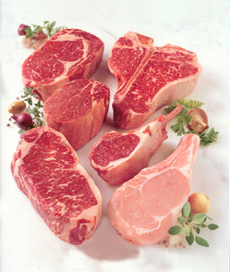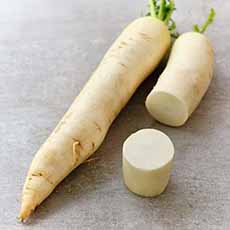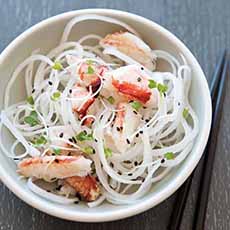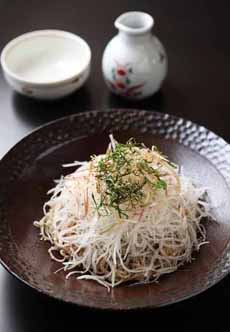|
The original Iron Chef cooking show, devised by Fuji TV in Japan, ran from 1992 through 1999. We were mesmerized each week, as two Iron Chefs had less than an hour to cook a multi-course gourmet meal based on the ingredient of the week (which remained a surprise until the filming began).
What emerged in each episode was food so glorious, many viewers would have given anything just to be able to taste it.
Seven different chefs competed over the run, but during our viewing years, the three stars were Iron Chef Chinese, Chen Kenichi; Iron Chef French, Hiroyuki Sakai; and Iron Chef Japanese, Masaharu Morimoto. Each chef owns a restaurant in Japan (Kenichi a Chinese restaurant, Sakai a French restaurant, Morimoto a Japanese restaurant).
|
|

Iron Chef French, Hiroyuki Sakai. Photo courtesy Fuji TV.
|
|
The host and comic relief, Takeshi Kaga, was not a real “eccentric millionaire” with a castle and a culinary academy, but a well-known Japanese actor, Shigekatsu Katsuta.
While we loved all the Iron Chefs, we had a special fondness for Chef Sakai, based on the niceness he projected as well as the style of his food. He also has the most wins, and was named “King of Iron Chefs” after winning at the show’s grand finale.
Yesterday, thanks to Benihana restaurant, we met our favorite Iron Chef, who is executive culinary advisor to the restaurant chain. The occasion was an intimate lunch for journalists, and it reminded us how fun a lunch or dinner at Benihana can be.
The meal can also fit into most diets, as each table gets a personal chef who can customize the ingredients on the menu—top-quality beef, chicken, seafood and vegetables—to one’s diet (hold the butter, add the monounsaturated safflower oil). There are no tempting desserts (just ice cream and sorbet) and no bread.
|

Don and Betty Draper dine at Benihana in
an episode of “Mad Men.” Photo courtesy
AMC. |
|
BENIHANA: FUN FOR THE WHOLE FAMILY
Although we spotted a few private rooms used for business lunch meetings, Benihana is a communal experience. Whether your party is large or small (or just you), you sit around the teppanyaki (griddle/flat top) table as your chef prepares your meal: grilling, slicing and flipping until the cooked food is moved from the grill to your plate. Adults and kids alike will be mesmerized.
Benihana was founded in 1964 in New York City by Hiroaki “Rocky” Aoki, an alternate on the 1960 Japanese Olympic Wrestling Team.
|
Aoki moved to New York on a wrestling scholarship. The Big Apple had little Japanese cuisine at the time. Aoki devised the concept of fusion cuisine and theatre: meals theatrically prepared by a knife-wielding chef/entertainer at a teppanyaki table surrounded by guests. His menu took American favorites—steak, seafood and chicken—and served them Japanese style, cut into bite-size pieces.
Our chef, Carlos, amazed us by flipping a raw egg back and forth on the flat side of a cleaver; then, as a final show, flipping the egg into the air and landing it on the blade edge of the cleaver, breaking the egg in half. Pretty amazing stuff. (The eggs were used in the house’s signature fried rice.)
The meal begins with a delicate Japanese onion soup, followed by a salad with very tasty ginger dressing. The restaurant has added a sushi menu (there’s also a sushi bar), and the sushi we had was delicious.
WE FINALLY GET TO TASTE IRON CHEF FOOD
As much as we enjoyed our seafood entrée, the star of the lunch was a special creation prepared by Chef Sakai: Cercle de St. Jacque. A flat cake of seafood and vegetables—langoustine, live scallop, squid and seafood mousse with lotus root, taro root and chives, bound with a long strip of cucumber, the circle of seafood was garnished with a white miso seafood sauce and black Italian truffles. It’s not yet on the regular Benihana menu, but we’ll be the first to order it if it appears.
Thanks to Benihana, part of our fantasy—the opportunity to taste Chef Sakai’s food—has been realized. If anyone wants to send us to Tokyo to dine at his restaurant, La Rochelle, we can be packed in an hour.
There are 63 Benihana restaurants in the U.S., and several overseas. Check the company website to find the one nearest to you.
The New York City location, on West 56th Street between Fifth and Sixth Avenues, is convenient to City Center, shopping, Central Park and much more.
|
|

